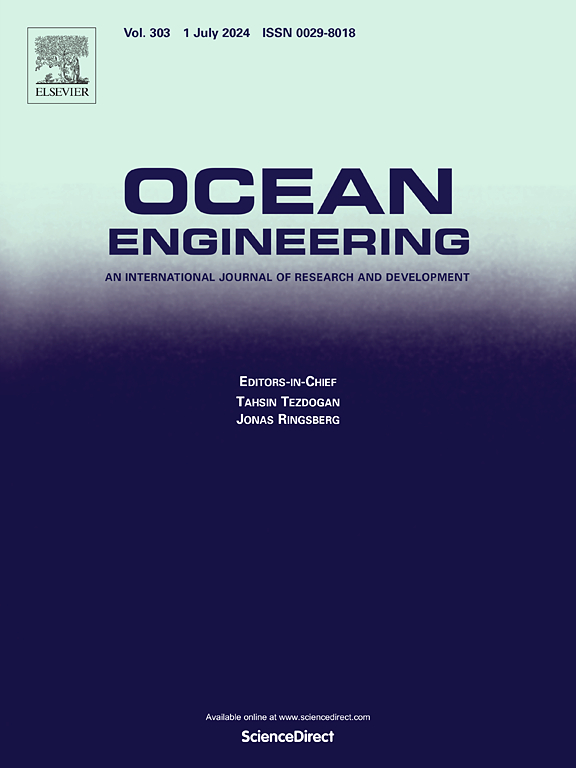基于短时波预测的无人水面飞行器姿态模型预测控制
IF 4.6
2区 工程技术
Q1 ENGINEERING, CIVIL
引用次数: 0
摘要
无人水面航行器(USV)广泛应用于商业和海洋科学研究。在公海条件下,USV 容易受到巨大的随机波浪干扰,因此必须采用姿态控制机制来确保安全运行。现有的控制算法大多依赖于比例积分微分(PID)控制和其他常用方法,往往只关注当前的模型状态,很少结合海浪状态预测模型的未来演变。这一局限性阻碍了波涛汹涌海面上姿态控制的优化。为应对这一挑战,本文提出了一种基于长短期记忆神经网络(LSTM)波浪预测的模型预测姿态控制方法。通过预测 USV 在未来一段时间内受到的波浪干扰并优化操纵指令,该方法确定了最佳推进器驱动组合。该策略可实时动态适应海况,提高姿态控制的精度和准确性。利用离散李亚普诺夫稳定性准则验证了这一控制策略的稳定性。仿真结果表明,我们提出的控制策略具有显著的减少侧倾和俯仰的性能,超过了 PID 控制、线性二次调节器(LQR)控制、不带干扰补偿的模型预测控制(MPC)和带干扰补偿的模型预测控制(MPC)。此外,即使在存在状态反馈噪声的情况下,它也能保持卓越的控制效果,显示出广阔的应用前景。本文章由计算机程序翻译,如有差异,请以英文原文为准。
Model predictive attitude control of unmanned surface vehicle based on short-time wave prediction
Unmanned Surface Vehicles (USVs) are widely used in commercial and marine scientific research. In high sea conditions, USV is susceptible to significant random wave disturbances, necessitating the adoption of attitude control mechanisms to ensure safe operation. Existing control algorithms, mostly relying on Proportional Integral and Differential (PID) control and other common methods, tend to concentrate solely on the current model state, and seldom predict the future evolution of the model in combination with the state of the waves. This limitation hinders the optimization of attitude control in rough seas. To address this challenge, this paper proposes a model predictive attitude control approach grounded in Long Short-Term Memory neural network (LSTM) wave forecasting. By forecasting the wave disturbances on the USV in the coming period of time horizon and optimizing maneuvering commands, it identifies the optimal thruster actuation combination. This strategy dynamically adapts to sea conditions in real-time, enhancing the precision and accuracy of attitude control. The stability of this control strategy is validated using the discrete Lyapunov stability criterion. Simulation results demonstrate that our proposed control strategy exhibits remarkable roll and pitch reduction performance, surpassing PID control , linear quadratic regulator (LQR) control, model predictive control (MPC) without disturbance compensation, and MPC with disturbance compensation. Moreover, it maintains a superior control effect even in the presence of state feedback noise, indicating promising application prospects.
求助全文
通过发布文献求助,成功后即可免费获取论文全文。
去求助
来源期刊

Ocean Engineering
工程技术-工程:大洋
CiteScore
7.30
自引率
34.00%
发文量
2379
审稿时长
8.1 months
期刊介绍:
Ocean Engineering provides a medium for the publication of original research and development work in the field of ocean engineering. Ocean Engineering seeks papers in the following topics.
 求助内容:
求助内容: 应助结果提醒方式:
应助结果提醒方式:


